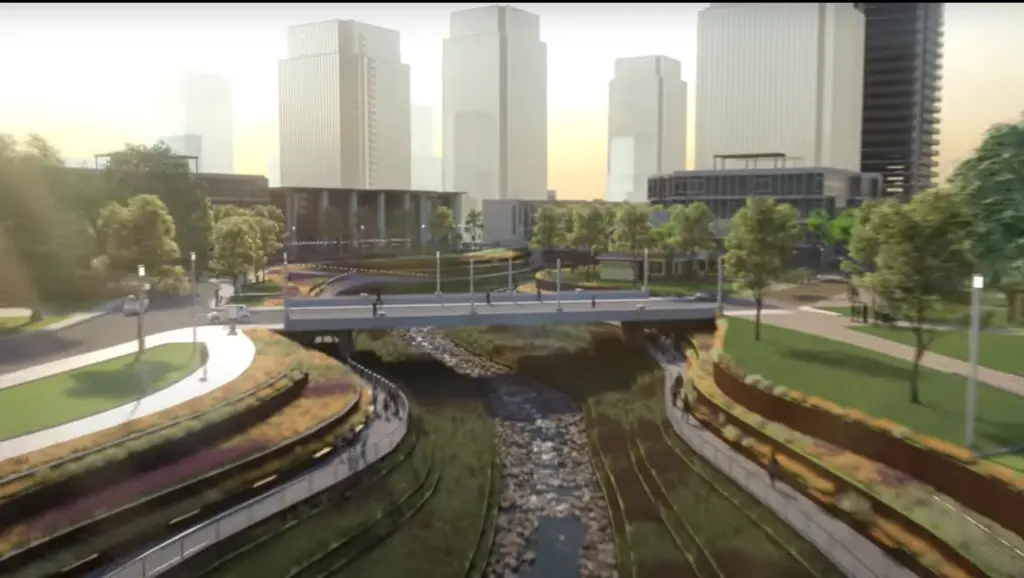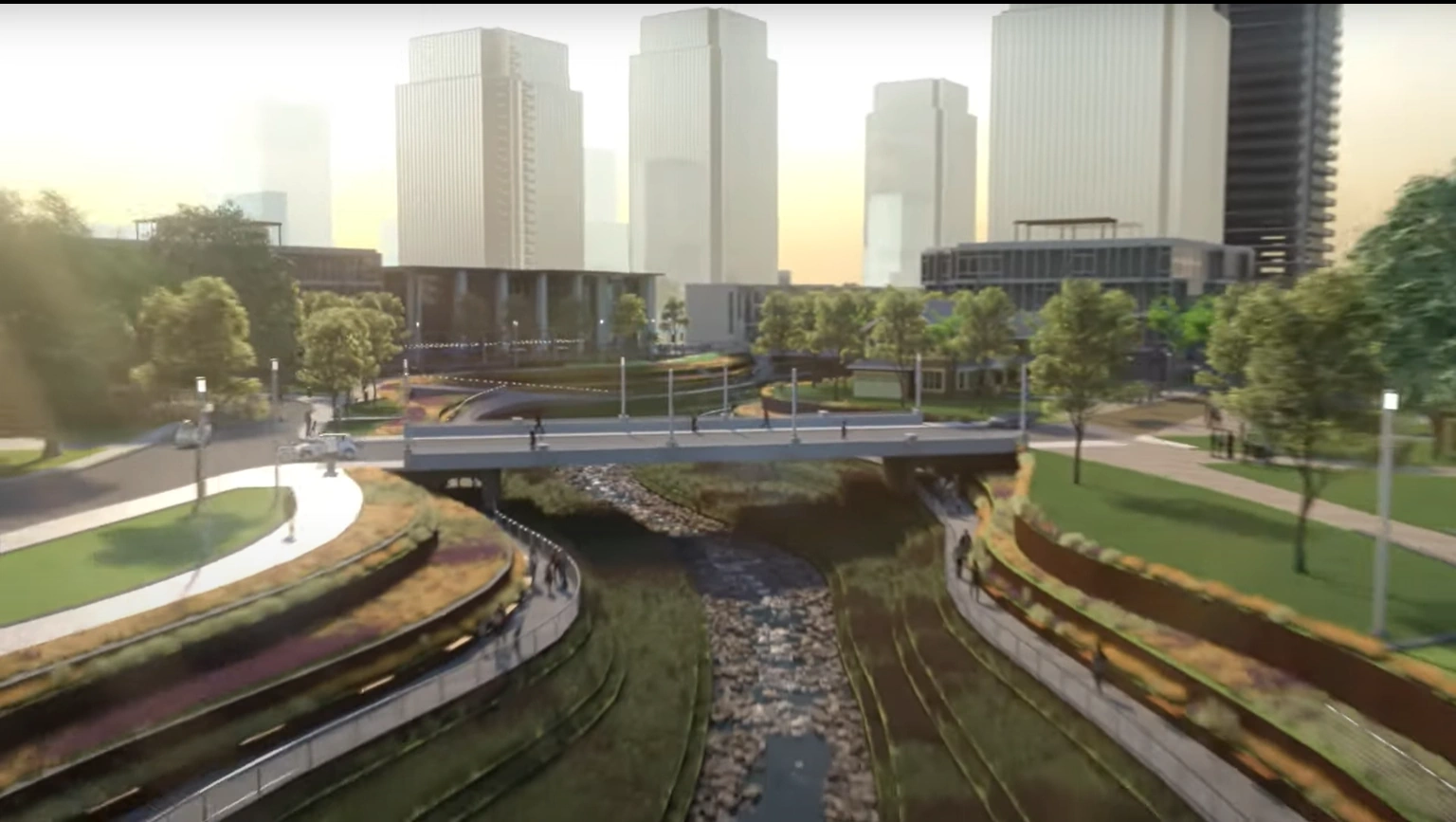
Center City Breathe: Reclaiming Urban Air Quality for a Healthier Philadelphia
Philadelphia’s Center City, a vibrant hub of commerce, culture, and community, often grapples with the challenges of urban air quality. The concentration of vehicles, buildings, and industrial activity can contribute to air pollution, impacting the health and well-being of residents, workers, and visitors. Center City Breathe is a burgeoning initiative focused on addressing these concerns and fostering a cleaner, healthier environment in the heart of Philadelphia. This article delves into the sources of air pollution in Center City, the potential health impacts, and the innovative strategies being implemented to improve air quality, making Center City Breathe a reality.
Understanding Air Pollution in Center City
Several factors contribute to air pollution in Philadelphia’s Center City:
- Vehicle Emissions: Cars, trucks, and buses release pollutants such as nitrogen oxides (NOx), particulate matter (PM2.5 and PM10), and carbon monoxide (CO). Heavy traffic congestion exacerbates these emissions, particularly during peak hours.
- Building Emissions: Heating and cooling systems in buildings, especially older structures, can release pollutants. The burning of fossil fuels for energy generation contributes to air pollution.
- Industrial Activity: While Center City is primarily a commercial and residential area, nearby industrial zones can contribute to air pollution that drifts into the city center.
- Construction: Construction sites generate dust and particulate matter, which can temporarily degrade air quality in the immediate vicinity.
The Health Impacts of Poor Air Quality
Exposure to air pollution can have a range of adverse health effects, particularly for vulnerable populations such as children, the elderly, and individuals with respiratory conditions. The health impacts include:
- Respiratory Problems: Air pollution can trigger asthma attacks, worsen bronchitis, and increase the risk of respiratory infections.
- Cardiovascular Issues: Exposure to particulate matter has been linked to heart disease, stroke, and other cardiovascular problems.
- Cancer: Long-term exposure to certain air pollutants, such as benzene, can increase the risk of cancer.
- Developmental Effects: Studies have shown that air pollution can negatively impact cognitive development in children.
Addressing these health concerns is a primary motivator for initiatives like Center City Breathe, aiming to create a healthier urban environment.
Strategies for Improving Air Quality in Center City
A multi-faceted approach is essential to improve air quality in Center City. Several strategies are being implemented and explored, including:
Promoting Sustainable Transportation
Reducing vehicle emissions is crucial. Strategies include:
- Investing in Public Transportation: Expanding and improving public transportation options, such as buses, subways, and trolleys, can encourage people to leave their cars at home.
- Encouraging Cycling and Walking: Creating bike lanes, pedestrian-friendly streets, and bike-sharing programs can make cycling and walking more attractive transportation options.
- Supporting Electric Vehicles: Providing incentives for electric vehicle purchases and installing charging stations can reduce emissions from the transportation sector.
- Implementing Congestion Pricing: Charging drivers a fee to enter congested areas during peak hours can discourage driving and reduce traffic.
Greening the Urban Landscape
Increasing green spaces can help to filter air pollution and improve air quality. Strategies include:
- Planting Trees: Trees absorb air pollutants and release oxygen, helping to clean the air. Planting trees along streets and in parks can significantly improve air quality.
- Creating Green Roofs: Green roofs, which are roofs covered with vegetation, can absorb air pollutants, reduce stormwater runoff, and lower building temperatures.
- Developing Green Walls: Green walls, which are vertical structures covered with vegetation, can also help to filter air pollution and improve air quality.
Improving Building Energy Efficiency
Reducing energy consumption in buildings can decrease emissions from power plants. Strategies include:
- Promoting Energy-Efficient Appliances: Encouraging the use of energy-efficient appliances can reduce energy consumption and emissions.
- Improving Building Insulation: Improving building insulation can reduce heating and cooling costs, as well as emissions.
- Using Renewable Energy Sources: Installing solar panels or using other renewable energy sources can reduce reliance on fossil fuels.
Monitoring and Regulation
Monitoring air quality and enforcing regulations are essential to ensure that air pollution levels are within acceptable limits. Strategies include:
- Air Quality Monitoring: Regularly monitoring air quality levels can provide data to track progress and identify areas where improvements are needed.
- Enforcing Air Quality Regulations: Enforcing regulations on emissions from vehicles, buildings, and industrial sources can help to reduce air pollution.
- Public Awareness Campaigns: Educating the public about the health impacts of air pollution and ways to reduce emissions can encourage people to take action.
The Role of Technology in Center City Breathe
Technological advancements play a crucial role in the Center City Breathe initiative. Smart sensors can monitor air quality in real-time, providing valuable data for decision-making. Mobile apps can inform residents about air quality conditions and provide recommendations for reducing exposure. Data analytics can identify pollution hotspots and track the effectiveness of mitigation strategies.
Community Engagement and Collaboration
The success of Center City Breathe depends on community engagement and collaboration. Residents, businesses, government agencies, and non-profit organizations must work together to develop and implement solutions. Public forums, workshops, and educational programs can raise awareness and encourage participation.
The Center City Breathe initiative is not just about improving air quality; it’s about creating a more livable, sustainable, and healthy urban environment for all Philadelphians. By addressing the sources of air pollution, promoting sustainable practices, and leveraging technology, we can transform Center City Breathe from an aspiration into a tangible reality.
Looking Ahead: The Future of Air Quality in Center City
The journey towards cleaner air in Center City is an ongoing process. Continuous monitoring, adaptation, and innovation are essential to address emerging challenges and ensure long-term success. The Center City Breathe initiative serves as a model for other urban areas seeking to improve air quality and protect public health. The commitment to cleaner air in Center City Breathe reflects a broader dedication to environmental sustainability and the well-being of future generations.
The collaborative spirit behind Center City Breathe is what will ultimately make the difference. It’s about everyone doing their part, from individuals choosing to bike to work to businesses investing in energy-efficient technologies. Together, we can create a Center City Breathe that is truly a breath of fresh air.
[See also: Philadelphia Green Initiatives] [See also: Urban Air Quality Monitoring] [See also: Sustainable Transportation in Cities]

